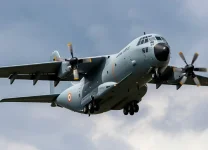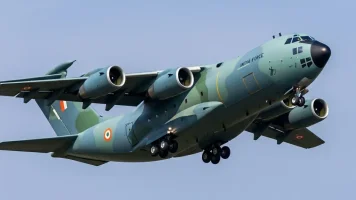- Views: 3K
- Replies: 26

The US-made Stryker Infantry Combat Vehicle (ICV), produced by General Dynamics Land Systems, has faced significant challenges during high-altitude mobility trials in the demanding terrain of Ladakh, India.
These trials, designed to evaluate the vehicle's suitability for deployment in extreme environments, revealed that the Stryker's 300-horsepower (hp) engine is underpowered for operations in high-altitude regions.
In response to this setback, General Dynamics has committed to upgrading the Stryker with a more powerful 600hp engine and will conduct re-trials once initial testing of the modified vehicle is complete.
The Ladakh region, with its high altitudes, extreme cold, low oxygen levels, and challenging terrain, presents a unique set of operational challenges for military vehicles. These conditions necessitate ICVs with exceptional mobility, durability, and combat effectiveness, especially for rapid deployment and operations in border areas along the Line of Actual Control (LAC) with China.
The eight-wheeled Stryker ICV underwent rigorous testing in Ladakh as part of India's initiative to modernize its mechanized infantry battalions. The Indian Army is looking to procure approximately 530 ICVs to replace its aging fleet of Russian-origin BMP-2 vehicles.
The Stryker, known for its versatility and mobility in various terrains, was initially considered a strong contender under the US-India Initiative on Critical and Emerging Technologies (iCET), which focuses on joint production and technology collaboration.
However, during trials conducted in September-October 2024, the Stryker's Caterpillar C7 engine proved inadequate for the high-altitude environment. The engine's low power output struggled to cope with the reduced air density at high altitudes, resulting in compromised mobility and operational effectiveness. This raised serious concerns about the vehicle's suitability for deployment in mountainous regions like Ladakh and Sikkim, where India faces ongoing border tensions with China.
General Dynamics, acknowledging the Indian Army's feedback, has proposed a significant upgrade to the Stryker's powertrain. The existing 300hp engine will be replaced with a more robust 600hp engine, a move aimed at enhancing the vehicle's performance in high-altitude and challenging terrains. This increased power is expected to significantly improve the Stryker's power-to-weight ratio, enabling it to navigate steep inclines, traverse difficult terrain, and operate effectively in low-oxygen environments.
To ensure the effectiveness of the upgrade, General Dynamics will conduct initial trials of the modified Stryker in the US to validate the new engine's performance. Following successful completion of these trials, the upgraded vehicle will be sent to India for re-trials in Ladakh, allowing the Indian Army to reassess its capabilities under the same challenging conditions.
The Stryker's performance issues in Ladakh have also spurred discussions regarding indigenous alternatives, such as the Wheeled Armoured Platform (WhAP) developed by India's DRDO and Tata Advanced Systems.
The WhAP, designed specifically for Indian conditions, boasts a 600hp engine and amphibious capabilities, making it a potentially strong contender for high-altitude and diverse terrain operations. Critics of the Stryker acquisition argue that investing in indigenous platforms like the WhAP would better serve India's self-reliance goals in defence technology.



